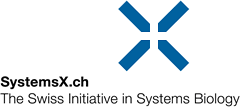Archiv
Video: AneuX explained
AneuX is one of the nine Medical Research and Development (MRD) Projects supported by SystemsX.ch. This project employs a systems biology approach in the investigation of aneurysms. An aneurysm is a limited, irreversible dilution and dilation of the vascular wall of arteries and veins. The study is being conducted by the University Hospital of Geneva and the ZHAW, which has produced an informative short film about the project.
Watch the video »
Don’t miss the LS² Annual Meeting on February 2-3, 2017
The LS² Annual Meeting will take place from February 2-3, 2017 at the Irchel Campus of the University of Zurich. It will bring together Swiss and international scientists from diverse backgrounds to explore the wide spectrum of research topics in the life sciences. SystemsX.ch will be present at the event and is supporting the SystemsX.ch lecture by Andrew Macpherson from the University of Bern on Thursday at 9.15 am. The meeting is organized by Life Sciences Switzerland (LS²) in collaboration with the University of Zurich and is sponsored by SystemsX.ch.
Download here the LS2 Annual Meeting 2017 booklet »
More information on the LS2website »
Using microfluidics to improve genetics research
Scientists at EPFL have developed a technique that can be a game-changer for genetics by making the characterization of DNA-binding proteins much faster, more accurate, and efficient. (Image: A. Isakova/EPFL). This research was supported by a SystemsX.ch Special Opportunities Project. Read the article published by EPFL »
Wichtiges Protein in der Entstehung und Behandlung von Brustkrebs identifiziert
Wie entsteht Brustkrebs und warum sind manche Patientinnen resistent gegen etablierte Therapien? Forschende der Universität Basel haben neue Erkenntnisse zu den molekularen Prozessen im Brustgewebe gewonnen. Sie identifizierten den Tumorsuppressor LATS als zentralen Akteur in der Entwicklung und Behandlung von Brustkrebs. Diese Forschungsarbeit wurde von SystemsX.ch untertützt (MRD Projekt MetastasiX).
Lesen Sie den Artikel der Universität Basel »




